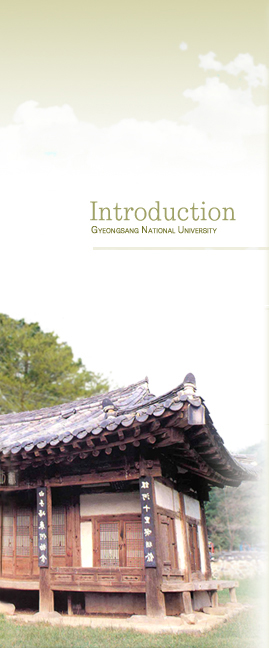|
|
 |
 |
 |
 |
|
| |
| ¡Û |
The collection of old books and local archival materials has been an activity of Gyeongsang University Library since the establishment of the Department of Archives and Special Collections in 1989, which was then housed within the Library. The Department has been unique in Gyeongnam Province. |
| |
|
| ¡Û |
In October 2001, the Department moved to Nammyeong Hall, a new building erected in memory of a leading local scholar from the Joseon Dynasty, and named after him. The construction of this building had been a long-standing wish of local residents and the university in order to promote local historical and cultural studies, and provide better access to the Nammyeong Collections. |
| |
|
| ¡Û |
The Department of Archives and Special Collections was officially renamed the ¡°Literary Well Office¡± (Mun-cheon-kak) during the inauguration ceremony of Nammyeong Hall on October 23rd, 2001. The aims of the Literary Well Office are threefold: to acquire, catalog and conserve old books and archive materials; to serve the specialist interests of amateur historians, as well as academics and professional researchers; to become the leading resource centre on the history and culture of the Western area of Gyeongsang Province. |
| |
|
| ¡Û |
The Literary Well Office possesses the largest number of archives and Registered Provincial Treasures in Gyeongnam Province. It boasts over 25,000 archives, 1,682 Registered Provincial Treasures, and more than 20,000 photocopies of old and rare books. These are housed in three different rooms: the Room for Thread-Bound Archives, the Room for Engraved Wood Blocks, and the Room for Photocopies of Old Books. |
| |
|
| ¡Û |
The Nammyeong Collections in Nammyeong Hall : The Nammyeong Collections are held in three rooms in Nammyeong Hall: The Room for Thread-Bound Archives, the Room for Engraved Wood Blocks, and the Room for Photocopies of Old Books. |
|
| |
 |
 |
|
|
 |
| The collection is composed of 25,000 volumes of archives, which were acquired through gifts from 13 clans in Gyeongnam Province. It includes the collected works of local Confucian scholars, the major Confucian Classics, and other old documents covering a variety of fields. |
|
|
 |
|
| |
 |
 |
|
|
 |
This room is a repository for 1,452 original wood blocks, and for about 30,000 wooden letter types from the late 19th century. The collection includes complete sets of wood blocks (one block per book page) and wooden letter types, which were used for printing the Rites for Confucian Scholars (333 blocks dating back to 1870), Jong-yo-rok (329 blocks carved in 1878), the Collected Works of Seong-jay (633 blocks engraved in 1891), and the Collected Works of Mul-cheon (329 blocks cut in 1910).
The rest of the collection is composed of: 5 signboards which hung at the front of school buildings to communicate the school¡¯s ethos; 2 public notice boards, one about the reconstruction of the Mul-cheon School building, the other describing the Dragon Gate School (or Yong-mun Jeong-sa) building; and about 3,000 assorted wooden letter types. |
|
|
 |
|
| |
 |
 |
|
|
 |
| Over 20,000 photocopies of old books and archival materials can be consulted in this room. They constitute an invaluable resource for those who are interested in Korean and Oriental Studies. For instance, Government Documents from the Joseon Dynasty (or Joseon Wangjo Silrok), Records of Daily Inspections of Government Documents (or Il-sung-rok), and a comprehensive collection of works by past Korean scholars can be consulted. |
|
|
 |
|
| |
|
 |
|
|
|
